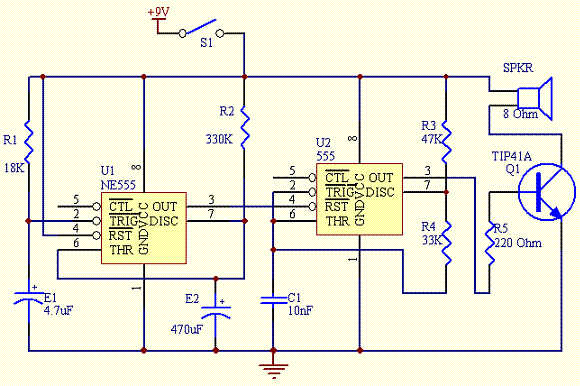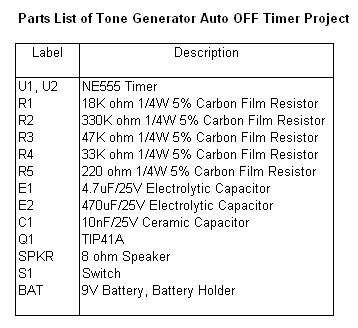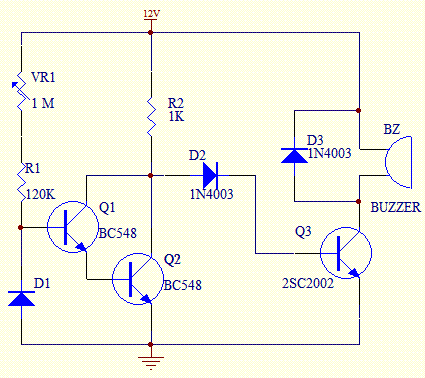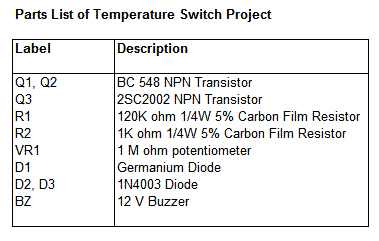What is a Smart Antenna?
Smart Antennas, also known as multiple antennas, adaptive array antennas, and so on is used to increase the efficiency in digital wireless communication systems. It works by taking the advantage of the diversity effect at the transceiver of the wireless system that is the source and the destination. The term diversity effect refers to the transmission and reception of multiple radio frequencies that are used to decrease the error during data communication and also to increase data speed between the source and the destination.
This type of technology has already found its significance in most of the wireless communication systems as special antenna arrays are used with signal processing algorithms which can easily locate and track the different wireless targets such as mobiles. It is also used to calculate the beam forming vectors and the direction of arrival [DOA] of the signal.
Difference between Conventional Antenna and Smart Antenna
The main difference is related with the way both the systems deal with the problems caused by multipath wave propagation. When a wireless signal is sent to a large distance it may have to pass many barriers like tall buildings, mountains, utility wires and so on. Thus these signals’ wave fronts will be scattered and will take multiple paths to reach the receiver. In a conventional wi-fi communication system, a method called single input single output [SISO] is used, that is one antenna will be connected to the source and another one will be connected to the destination. When the signals arrive late at the destination, they may arrive faded, cut-out and also with common communication problems like picket fencing. This is one of the basic problems of a SISO system. Thus if we use SISO system in a internet connection, the data will arrive late and that too erroneous in nature. All these problems can be solved with the help of Smart Antennas.
Smart Antenna – Functions
A smart antenna has mainly two basic functions. They are explained in detail below.
1. Estimation of Direction of arrival (DOA)
In smart antennas various techniques like MUSIC (Multiple Signal Classification) and estimation of signal parameters via rotational invariance techniques (ESPRIT) algorithms are used to find the DOA of a signal. This method requires a lot of computations and algorithms. Even Matrix Pencil method is commonly used in smart arrays to find the DOA. Matrix Pencil method is more commonly used in real time systems as they are highly efficient than the other two. The antenna acts like a sensor in which a spatial spectrum of the array is selected and the DOA is found out from the peaks of this spectrum.
2. Beamforming Method
The mobiles or targets at which the signals are to be sent are first sought out and then a radiation pattern of the antenna array is created by adding the signal phases. At the same time the mobiles which will not need the signal will be out of pattern. Though this method may seem a little to complicated, it can be done easily with the help of a FIR tapped delay line filter. According to the signal used the weight of the FIR filter can also be changed accordingly. The filters will also be helpful in providing optical beamforming so as to decrease the MMSE between the actual and wanted beam pattern that is formed.
Types of Smart Antennas
The classification of Smart Antennas depends on the type of environment and the requirements of the system. There are mainly two types of Smart Antennas. They are
1. Phased Array/Beam Smart/Multi-beam Antenna
In this type of array, there will be numerous amount of fixed beams amongst which one beam will turn on or will be steered towards the wanted signal. This can be done only with the help of adjustment in the phase. In other words, as the wanted target moves, the beam will also be steered. The figure of a phased array antenna is shown below.
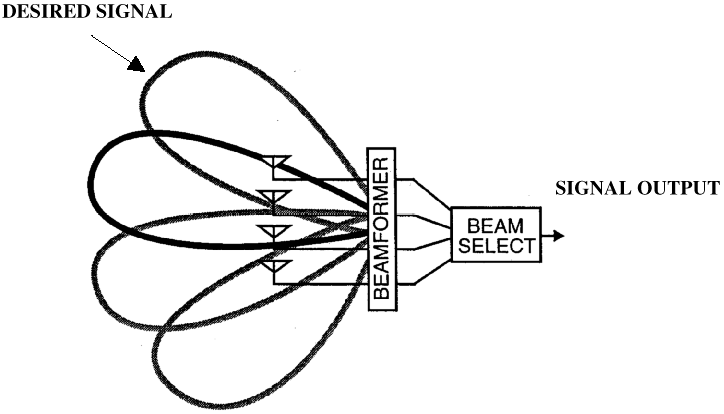
Phased Array Antenna
2. Adaptive Array Antenna
In this type of antenna, there will be a change in the beam pattern according to the movement of the wanted user and the movement of the interference. The signals that are received will be weighted and later combined to increase the wanted signal to interference in addition to the noise and power ratio [S/N]. Thus, the direction of interference will be balanced as the wanted signal will be in the direction of the main beam.
The antenna can easily steer the main beam to any direction, while at the same time nullifying the interfering signal. The direction of the beam can be calculated using the DOA method. The figure of an adaptive array antenna is shown below. Take a look.

Adaptive Array Antennas
Another way of categorizing smart antennas is in the number of inputs and outputs that is used for the device. According t this classification the categories are given below.
1. SIMO (Single Input – Multiple Output)
In this method one antenna will be used at the source and multiple antennas will be used at the destination.
2. MISO (Multiple Input – Single Output)
In this method, multiple antennas will be used at the source and only one antenna will be used at the receiver.
3. MIMO (Multiple Input – Multiple Output)
In this method multiple antennas will be used at both the source and the destination. This is the most efficient method amongst all. This method was extended recently in accordance to the IEEE 802.11n standard. This method clearly supports spatial information processing.
Advantages
- Both beam smart and adaptive arrays provide high efficiency and thus high power for the desired signal. When a large number of antenna elements are used at a higher frequency, Beam Smart antennas use narrow pencil beams. Thus high efficiency is obtained in the direction of the desired signal. If a fixed number of antenna elements are used the same amount times the power gain will be produced with the help of adaptive array antennas.
- Another advantage is in the amount of interference that is suppressed. Beam smart antennas suppress it with the narrow beam and adaptive array antennas suppress the interference by adjusting the beam pattern.
Disadvantages
The main disadvantages are
The cost of such a device will be more, not only in the electronics section, but also in the power. That is the device is way too expensive [especially if MIMO methods are used.], and will also decrease the life of battery of mobiles. The receiver chains that are used must be reduced in order to reduce the cost. Also the costs rise up due to the RF electronics and A/D converter used for each antenna.
For this method to be efficient large base stations are needed. This will increase the size. Apart from this multiple external antennas are needed on each terminal. This is not practical. But companies re trying methods like dual polarization to reduce the size.
When multiple mitigation is needed, diversity becomes a big problem. The terminals and base stations must have multiple antennas. There are mainly three types of diversities. They are spatial, polarization, and angle.
Spatial separation of the antennas that are used is practically impossible when it is applied on mobile phones. It is also difficult to be achieved in point-to-point systems where a near line-of-sight exists between the transmitter and receiver. By using polarized diversity, the above problem can be avoided to a certain point. Dual polarization can be easily instigated without the use of spatial separation.
Angular diversity is the most commonly used method nowadays. The signals which have the maximum signal power are selected from multiple beams and are used to maintain diversity. But the gain depends on the angular spread. That is, if the spread is small, the diversity will also be small.
- Tracking
- Spatial-temporal processing
- Hooks in international
- standards to include provisions for smart antennas
- Vertical integration
Read more: http://www.circuitstoday.com/smart-antennas#ixzz1BNsX3f5p
Under Creative Commons License: Attribution




